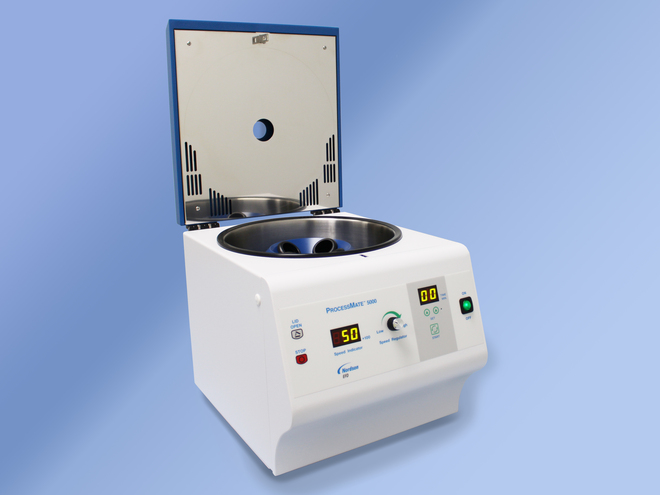Contributed by LabTech Solutions | April 24, 2025
If you work in a laboratory—whether in medical diagnostics, pharmaceuticals, biology, or chemical research—you already know how essential a centrifuge is. A good centrifuge saves time, increases accuracy, and protects the integrity of your samples. But just like LED grow lights, centrifuge technology has rapidly evolved in recent years. So, how do you compare all the options out there? How can you separate verified performance from marketing hype?
This guide will help you understand what matters when buying a centrifuge in 2025—breaking down complex specs into clear, practical advice for choosing the right model for your needs.
Why Centrifuges Matter in the Lab
Centrifuges use centrifugal force to separate components within a liquid. When a sample is spun at high speed, heavier particles move outward (forming a pellet), while lighter materials stay closer to the center. This process is essential in tasks like:
- Separating blood plasma from red cells
- Isolating DNA, RNA, or proteins
- Purifying chemical compounds
- Preparing urine, saliva, or serum samples
But performance varies drastically between models. Buying the wrong centrifuge could lead to poor separation, damaged samples, or even dangerous imbalances.
Step 1: Understand the Types of Centrifuges
Just like lighting systems must be chosen based on the type of cultivation environment, centrifuges must match your specific application. Here are the most common types:
🔬 Microcentrifuge
- Handles small volumes (0.2 to 2 ml)
- Ideal for genetic or molecular biology research
- Spins up to 15,000–21,000 RPM
🧪 Benchtop Centrifuge
- For small to medium labs
- Accommodates tubes from 1.5 ml to 50 ml
- Compact, affordable, and versatile
❄️ Refrigerated Centrifuge
- Maintains low temperatures for sensitive biological samples
- Crucial for enzymes, proteins, or live cells
- Available in micro or benchtop models
⚡ High-Speed Centrifuge
- Reaches 25,000 RPM or more
- Used in research, pharmaceuticals, and blood banks
- Offers better separation for larger volumes or fine particles
🌌 Ultracentrifuge
- Spins up to 100,000 RPM
- For nano-sized particles like viruses or ribosomes
- Used primarily in advanced research labs
Step 2: Know the Key Metrics—Don’t Just Trust Brochures
Many manufacturers promise “high speed” or “quiet operation,” but let’s focus on objective, comparable data that truly impacts performance:
🔧 Relative Centrifugal Force (RCF)
- More important than RPM alone
- Measures how much force is being applied to the sample (in g)
- RCF = 1.12 × radius (cm) × (RPM/1000)²
Always check the max RCF—not just RPM—to compare models fairly.
📦 Capacity
- How many tubes can you spin at once? What volume?
- If processing high sample loads daily, go for larger capacity rotors (e.g., 12 × 50 ml).
🌀 Rotor Type
- Fixed-angle: Best for pelleting and high speeds
- Swinging-bucket: Better for layered separation, like blood or urine
- Some centrifuges allow interchangeable rotors, offering more flexibility
❄️ Cooling (If Needed)
- Choose refrigerated models for temperature-sensitive materials
- Look for models with temperature control between -10°C and +40°C
Step 3: Use Proper Tools for Layout and Lab Integration
Just like ElumTools is used for lighting layout, centrifuge placement and airflow also matter. In labs with multiple machines:
- Avoid tight corners to allow proper ventilation
- Ensure electrical load is within safe limits
- Use anti-vibration pads to minimize noise and wear
Talk to your lab planner or architect about where and how to position centrifuges for ideal workflow.
Step 4: Check for Certifications and Independent Testing
Just as the DesignLights Consortium (DLC) validates LED grow lights, you should look for independent lab certifications on centrifuges:
- UL or CE markings for safety
- ISO 9001/13485 for manufacturing quality
- Clinical or FDA approval, if used in diagnostics
If a centrifuge brand doesn’t provide this documentation or lab-verified performance data, that’s a red flag. Ask: Why isn’t this tested or certified?
Step 5: Understand the Warranty and Support
Don’t overlook the warranty—it reflects the manufacturer’s confidence in their product. A good warranty should:
- Cover at least 2–5 years
- Include the motor, electronics, and rotors
- Be backed by U.S.-based service and support
If a centrifuge fails mid-use, your entire workflow can be compromised. Having access to fast support is essential—especially for clinics or research timelines.
Avoid Common Buying Mistakes
Here are a few red flags and mistakes we often see:
- Overpaying for features you don’t need (e.g., ultracentrifuge when a microcentrifuge will do)
- Buying on RPM alone instead of checking RCF and rotor size
- Assuming all centrifuges are quiet—some are surprisingly loud
- Choosing aesthetics over function (Yes, a digital touchscreen is cool—but is it intuitive and reliable?)
Conclusion: Invest Smart in Your Centrifuge, Reap the Results
Like LED grow lights, centrifuges are not a one-size-fits-all product. Choose based on your application, not just price or marketing claims. Validate performance data, understand the right specs, and insist on a machine backed by solid warranty and support.
A properly selected centrifuge won’t just spin—it’ll support better science, better results, and smoother operations in your lab for years to come.

Leave a Reply